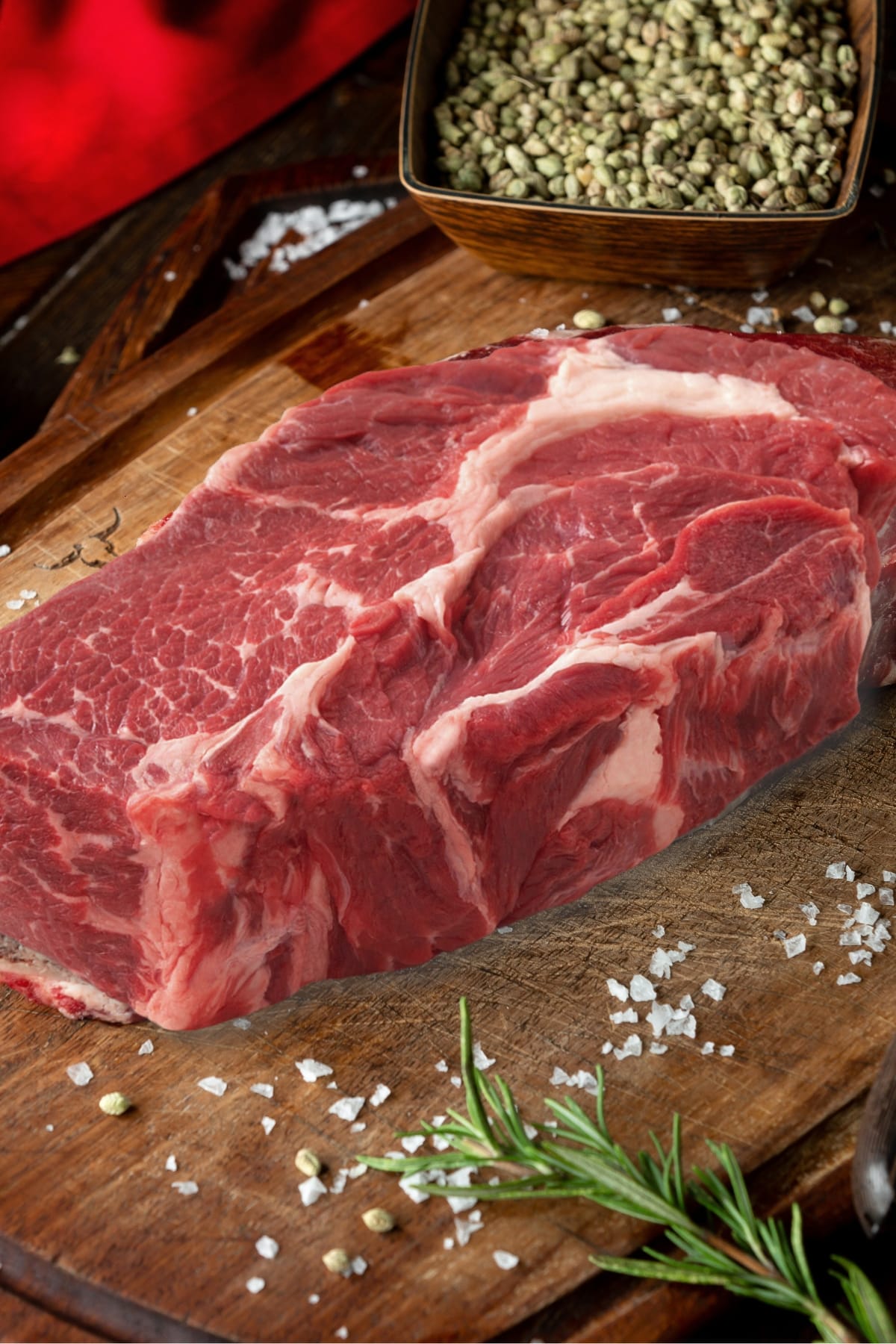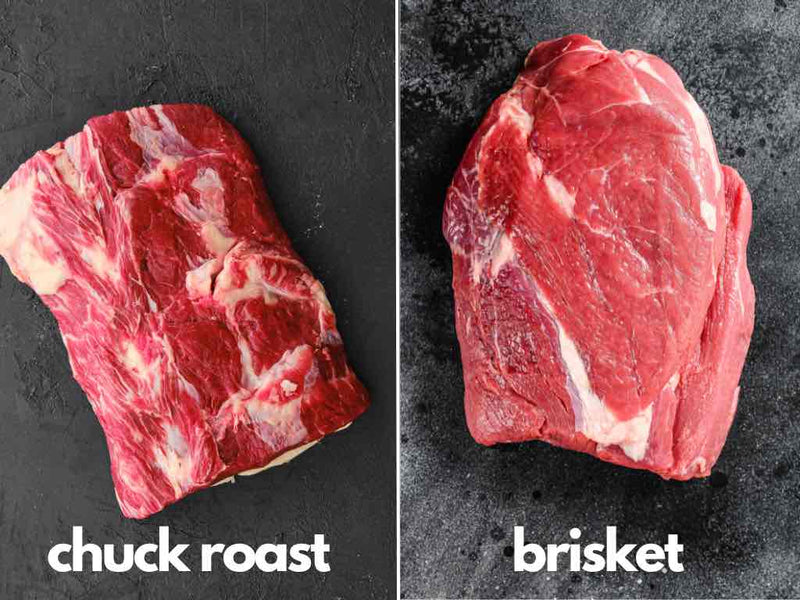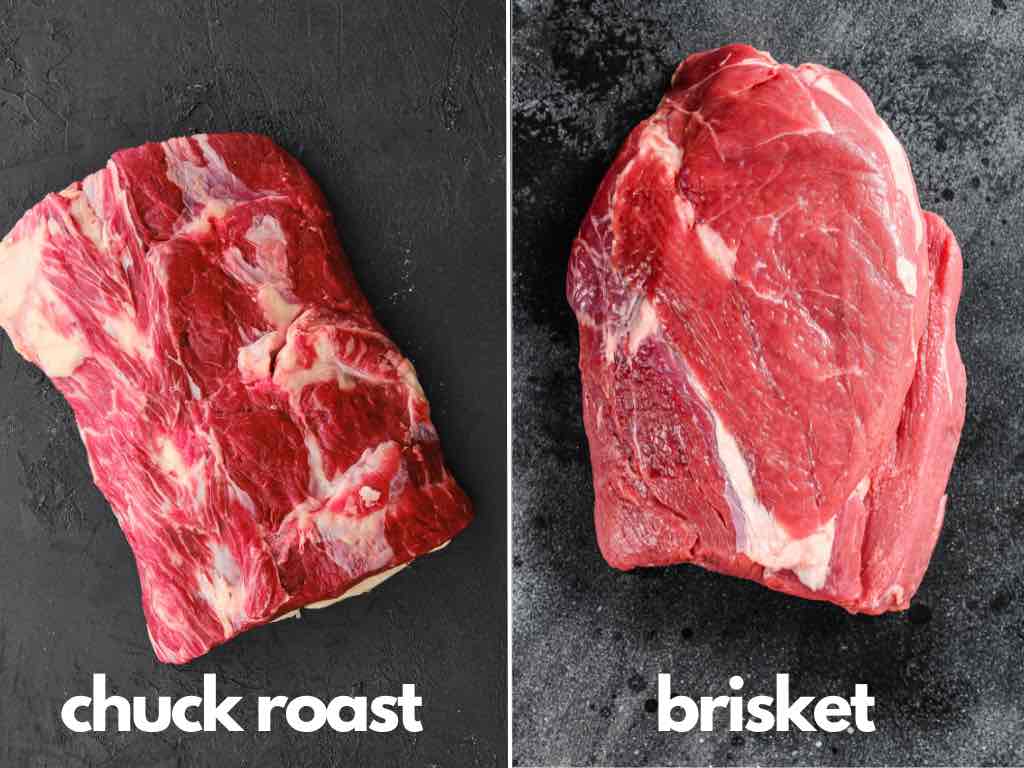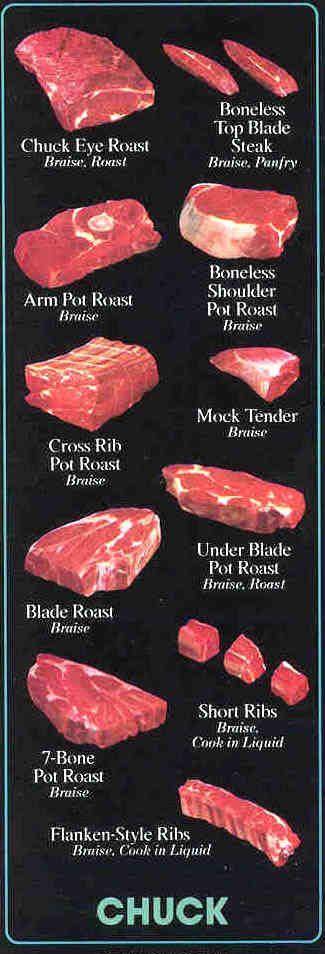Introduction

In the world of beef cuts, the shoulder roast and chuck roast are two popular options that can often leave home cooks puzzled. Understanding the characteristics and cooking methods for each cut is essential for achieving the best results in your recipes. This article aims to decipher the differences between shoulder roast and chuck roast, exploring variations in flavor, tenderness, and texture. By comparing these cuts and considering factors such as marbling and personal preference, you can make informed decisions when selecting the right roast for your next delicious meal.
Understanding The Basics Of Beef Cuts
When it comes to cooking beef, understanding the basics of beef cuts is crucial. Beef is divided into different cuts, each with its own unique characteristics and suitable cooking methods. The shoulder roast and chuck roast are two popular options that home cooks often encounter. Knowing the differences between these cuts can help you choose the right one for your culinary needs. Factors such as fat content, tenderness, and texture vary among cuts, influencing the flavor and overall cooking process. By familiarizing yourself with the basics, you can confidently navigate the world of beef cuts and create mouthwatering meals.
Importance Of Choosing The Right Cut For Cooking
Choosing the right cut of beef is crucial for achieving the desired flavor and texture in your dishes. Each cut has its own unique characteristics, such as fat content and tenderness, which directly impact the cooking process. By choosing the right cut for your specific recipe, you can ensure that your dish turns out tender, juicy, and flavorful. Whether you’re braising, roasting, or grilling, understanding the differences between cuts like the shoulder roast and chuck roast will help you make informed decisions and create mouthwatering meals that are sure to impress.
Shoulder Roast

Shoulder roast, also known as beef shoulder or shoulder clod, is a cut of beef that comes from the shoulder area of the cow. It is a flavorful cut with a slightly tougher texture compared to other cuts. Shoulder roast is known for its leaner meat and tighter grain, making it a great option for those who prefer a leaner choice. It can be used in a variety of cooking methods, such as braising, roasting, or slow cooking, to help tenderize the meat and bring out its rich flavors.
Shoulder Roast Definition And Characteristics
Shoulder roast, also known as beef shoulder or shoulder clod, is a flavorful cut of beef that comes from the shoulder area of the cow. It is a slightly tougher cut compared to others but is also leaner with a tighter grain. The shoulder roast is known for its rich, beefy flavor and can be tenderized through cooking methods like braising, roasting, or slow cooking. Its characteristics make it a great choice for those who prefer a leaner option but still want delicious flavors in their meals.
Best Cooking Methods For Shoulder Roast
Shoulder roast is a flavorful cut of beef that benefits from slow cooking methods to tenderize the meat and enhance its rich taste. Here are the best cooking methods for shoulder roast:
- Braising: This involves searing the roast on all sides and then simmering it in a flavorful liquid, like broth or wine, over low heat for several hours. This allows the meat to become tender and absorb the delicious flavors of the braising liquid.
- Roasting: This method involves cooking the shoulder roast uncovered in the oven at a low temperature for an extended period. This slow-roasting process helps to tenderize the meat while developing a savory crust on the outside.
- Slow cooking: Using a slow cooker is a convenient way to cook a shoulder roast. Simply season the meat, place it in the slow cooker with some liquid and spices, and cook on low heat for several hours. This method results in tender, juicy meat that easily falls apart.
- Pot roasting: Similar to braising, pot roasting involves searing the roast before placing it in a covered pot with vegetables and liquid. The pot is then cooked in the oven at a low temperature, allowing the flavors to meld together and the meat to become fork-tender.
Remember, the key to cooking a delicious shoulder roast is to give it ample time to cook low and slow, allowing the flavors to develop and the meat to become tender and succulent.
Chuck Roast

Chuck Roast is a beef cut that comes from the shoulder area. It is known for its rich flavor and marbling, which adds to its juiciness and tenderness. Chuck Roast is a versatile cut that can be used in various cooking techniques. It is perfect for slow cooking methods like braising, roasting, or pot roasting, as it allows the meat to become tender and develop deep flavors. Chuck Roast is often used in dishes like beef stew, pot roast, and shredded beef sandwiches. Its versatility and delicious taste make it a popular choice among home cooks and professional chefs alike.
Chuck Roast Definition And Characteristics
Chuck roast is a popular beef cut that comes from the chuck section of the cow. It is known for its rich flavor and marbling, which adds to its juicy and tender texture. Chuck roast is taken from the primal chuck, specifically from the shoulder region. It has a good amount of fat that melts during cooking, making the meat incredibly flavorful. This cut is often used in slow cooking methods like braising, roasting, or pot roasting, as it allows the meat to become tender and develop deep flavors.
Recommended Cooking Techniques For Chuck Roast
Chuck roast is a versatile cut of beef that lends itself well to various cooking techniques. One popular method is braising, which involves searing the meat in a hot pan and then slow-cooking it in liquid, such as broth or wine, until it becomes tender and juicy. Another option is roasting, where the roast is placed in the oven at a moderate temperature and cooked to your desired level of doneness. The slow cooker is also a great tool for cooking chuck roast, as it allows for long, slow cooking that results in incredibly tender meat. Whichever method you choose, the key is to cook the chuck roast low and slow to break down the tough muscle fibers and develop rich flavor.
Difference Between Shoulder Roast And Chuck Roast

When it comes to the difference between shoulder roast and chuck roast, there are a few key factors to consider.
Firstly, the flavor profiles vary between the two cuts. Shoulder roast, located on the upper portion of the shoulder, tends to have a richer and more pronounced flavor. On the other hand, chuck roast, found in the shoulder and neck area, offers a well-rounded beefy taste.
Secondly, there are variations in tenderness and texture. Shoulder roast, with its higher amount of connective tissue, requires longer cooking times to achieve tenderness. Chuck roast, with more marbling, is naturally more tender.
Overall, the choice between the two cuts depends on personal preference and the cooking method used.
Variations In Flavor Profiles
The flavor profiles of shoulder roast and chuck roast vary due to several factors. Shoulder roast, located on the upper portion of the shoulder, offers a richer and more pronounced flavor. This cut benefits from the muscular activity in that area, resulting in a savory and robust taste. On the other hand, chuck roast, found in the shoulder and neck area, has a well-rounded beefy flavor. The marbling and connective tissue in chuck roast contribute to its deep and satisfying taste. Choosing between these cuts will depend on personal preference and the desired flavor profile for your dish.
Variations In Tenderness And Texture
When it comes to tenderness and texture, there are noticeable differences between shoulder roast and chuck roast. Chuck roast, with its higher fat content and marbling, is generally considered to be more tender. The marbling helps keep the meat moist and results in a melt-in-your-mouth texture. On the other hand, shoulder roast, being leaner, has a tighter grain and can be slightly tougher. However, when cooked properly with methods like slow cooking or braising, shoulder roast can still become tender and flavorful. Keep these differences in mind when choosing the right cut for your desired texture.
Which Cut Should You Choose?

When deciding between shoulder roast and chuck roast, it ultimately comes down to your personal preference and the specific recipe you’re making. Both cuts offer their own unique qualities. If you prefer a leaner meat with a robust beefy taste, then shoulder roast is a great choice. It is versatile and can be used in various recipes. On the other hand, if you desire a richer, melt-in-your-mouth texture with lots of marbling, then chuck roast is the way to go. Consider the desired flavor profile and texture to make an informed decision for your dish.
Factors To Consider When Selecting A Roast
When selecting a roast, there are several factors to consider. Firstly, think about the flavor profile you desire. Shoulder roast offers a leaner meat with a robust beefy taste, while chuck roast provides a richer, melt-in-your-mouth texture with lots of marbling. Secondly, consider the cooking method you plan to use. Shoulder roast is versatile and can be used in various recipes, while chuck roast is great for slow cooking or braising. Lastly, think about the specific recipe you’re making and how the cut of meat will complement the other ingredients. Overall, it’s important to choose a roast that suits your preferences and cooking style.
Comparing Shoulder Roast And Chuck Roast In Different Recipes
When it comes to different recipes, both shoulder roast and chuck roast can be used interchangeably in many dishes. Shoulder roast, with its leaner meat and robust beefy flavor, is great for dishes like pot roasts, curries, and stir-fries. It can also be thinly sliced for sandwiches or used in tacos. On the other hand, chuck roast, with its rich marbling and melt-in-your-mouth texture, is perfect for slow cooking or braising. It shines in dishes like beef stew, chili, and pulled beef sandwiches. Ultimately, the choice between shoulder roast and chuck roast in different recipes depends on the specific flavors and textures you desire.
Conclusion

In conclusion, understanding the differences between shoulder roast and chuck roast is essential when it comes to choosing the right cut for your cooking needs. Shoulder roast offers leaner meat and a robust flavor, making it ideal for pot roasts and stir-fries. On the other hand, chuck roast’s marbling and tenderness are perfect for slow cooking and braising in dishes like stews and pulled beef sandwiches. Ultimately, the decision between shoulder roast and chuck roast depends on your specific preferences for flavor and texture. Consider the recipe and desired outcome to make an informed choice.
Summary Of The Key Differences Between Shoulder Roast And Chuck Roast
Shoulder roast and chuck roast may come from the same chuck section of the cow, but they have distinct differences. Shoulder roast, also known as a “arm roast” or “blade roast,” is leaner and offers a robust flavor. It is ideal for pot roasts and stir-fries. On the other hand, chuck roast is more marbled and tender, making it perfect for slow cooking and braising in dishes like stews and pulled beef sandwiches. When choosing between shoulder roast and chuck roast, consider your desired flavor, tenderness, and cooking method.
Making Informed Decisions When Cooking Beef
When it comes to cooking beef, making informed decisions about the cut of meat you choose is key. Understanding the characteristics of different cuts like shoulder roast and chuck roast allows you to select the right one for your desired flavor and tenderness. Consider factors such as cooking method, desired texture, and recipe requirements when making your choice. Whether you’re looking for a lean and robust option like shoulder roast or a tender and marbled choice like chuck roast, knowledge about beef cuts will help you make the best decision for your dish.
Frequently Asked Questions about Shoulder Roast vs Chuck Roast
Q: What is the difference between a shoulder roast and a chuck roast?
A: Both shoulder roast and chuck roast are cuts of beef that come from different parts of the animal.
Q: Which part of the animal does the shoulder roast come from?
A: The shoulder roast, also known as the shoulder clod, comes from the upper portion of the front leg, specifically the area near the shoulder joint.
Q: And what about the chuck roast?
A: On the other hand, the chuck roast is cut from the shoulder, which is closer to the animal’s neck.
Q: Are there any major differences in taste between the two cuts?
A: The shoulder roast tends to be a bit leaner compared to the chuck roast. However, when it comes to flavor, both cuts offer a rich and beefy taste.
Q: Which cut is generally more tender?
A: The shoulder roast is typically less tender compared to the chuck roast. Therefore, it typically benefits from low and slow cooking methods to become tender and juicy.
Q: Which cut is better for slow cooking or braising?
A: Both cuts are excellent choices for slow cooking or braising. However, due to its slightly higher fat content and marbling, the chuck roast is often favored for such cooking methods.
Q: Can I use shoulder roast and chuck roast interchangeably in recipes?
A: Yes, you can substitute shoulder roast for chuck roast, and vice versa, in most recipes. Just keep in mind that the cooking time and technique may need to be adjusted to ensure the best results.
Q: Which cut is more affordable?
A: In general, the shoulder roast tends to be more budget-friendly compared to the chuck roast.
Q: How should I cook these cuts to get the best results?
A: Both cuts are best cooked using slow and moist cooking methods such as braising, stewing, or pot roasting. This helps break down the connective tissues and results in a tender and flavorful final product.
Q: Can I grill or roast these cuts?
A: While slow cooking methods are recommended for shoulder roast and chuck roast, you can also grill or roast them if you prefer. However, due to their less tender nature, it’s important to marinate them or opt for a slow-roasting method to ensure tenderness.
In summary, both shoulder roast and chuck roast are flavorful cuts of beef, with the chuck roast being slightly more tender and fatty. They can be substituted for each other in recipes, but the cooking time and technique may need adjustment. Whether you choose shoulder roast or chuck roast, slow and moist cooking methods are key to achieving the best results.

Come for The Burgers… Stay for The Beers!